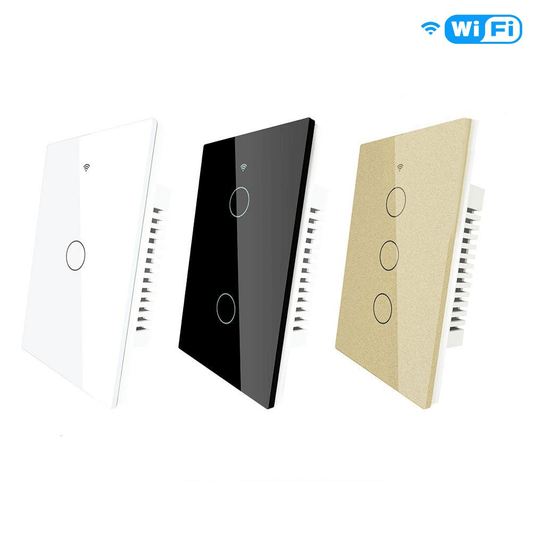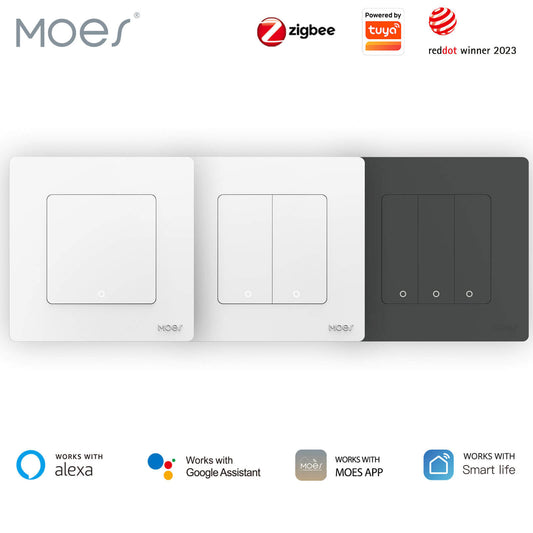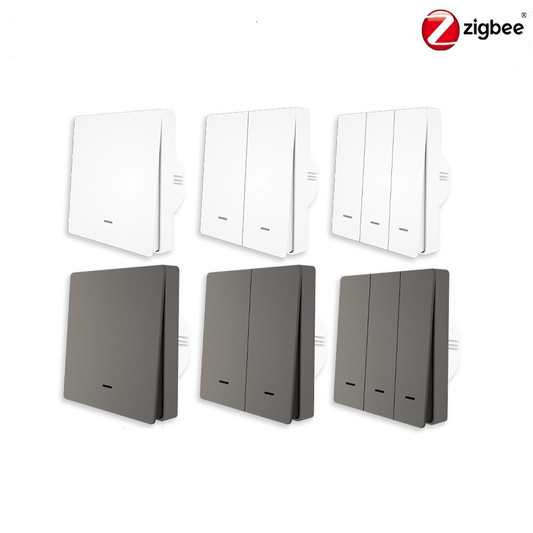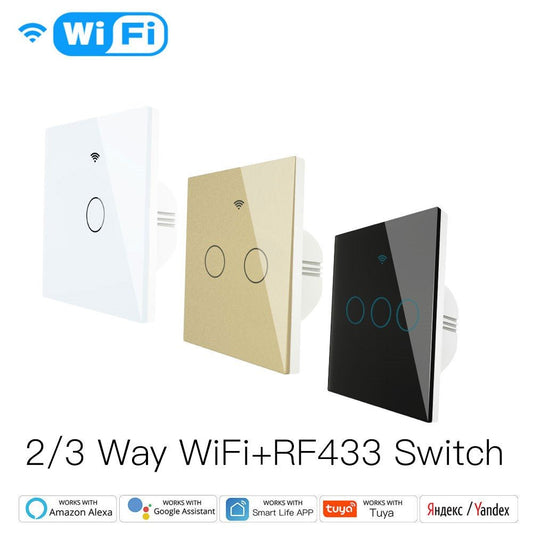Installing a dimmer light switch is a simple and effective way to enhance your home’s lighting. It offers better control over brightness and improves energy efficiency. Whether you want to create the perfect ambiance or reduce energy costs, a dimmer switch can make a noticeable difference.
Adjusting the brightness of your bulbs lets you create lighting scenes, from bright to soft, while lowering energy consumption. MOES offers various options that simplify installation and improve the overall lighting experience. In this article, we’ll know more about the dimmer lights, step-by-step instructions, and tips for a successful installation.
What Does a Dimmer Switch Do?
A dimmer switch allows you to adjust the brightness of your lights, giving you better control over your home’s ambiance. By reducing the voltage sent to the bulb, it dims the light. This lets you create different moods, from bright lighting for tasks to soft lighting for relaxation.
Dimmer switches work with most bulbs, including incandescent, halogen, and LED, making them versatile. They also help save energy because lower brightness consumes less power. This makes dimmer switches a practical and energy-efficient solution for homes and businesses. They can even integrate with smart home systems for automated adjustments.

What Does a Dimmer Switch work?
A dimmer switch works by adjusting the voltage supplied to a light bulb, which in turn controls its brightness. Unlike a standard switch that simply turns the light on or off, a dimmer uses a component called a triac or a transistor to reduce the amount of electricity flowing to the bulb. This reduction in power causes the light to appear dimmer. Some dimmers use a rotary dial, while others are touch-sensitive or slider-style. Modern dimmers are compatible with various types of bulbs, including incandescent, LED, and CFL. By controlling the brightness, dimmer switches help create the desired ambiance and reduce energy consumption by lowering the light output when full brightness isn't needed.
Why Use Dimmer Light Switches?
Dimmer light switches offer a range of benefits that go beyond simple brightness adjustment. These features can improve your home's lighting experience, making it more comfortable and visually appealing. Let’s explore how dimmer switches can enhance your home’s lighting.
Energy Savings: Dimmer switches let you adjust light brightness, saving up to 98% of energy and reducing energy costs. They also help lower your environmental impact.
Extended Bulb Life: By lowering the voltage to the bulb, dimmers extend its life. This is especially beneficial for incandescent bulbs, which last longer at lower brightness levels.
Easy Installation: Dimmer switches are simple to install with dimmer switch modules or can be easily set up by professionals.
Improved Comfort: Dimmer switches create a more comfortable atmosphere. Reducing harsh lighting in areas like the living room or bedroom promotes relaxation and helps reduce eye strain.
Enhanced Control: Dimmers provide flexible control over light intensity, whether through knobs, sliders, remotes, or touch. This versatility allows you to set the perfect ambiance in every room.
Aesthetic Appeal: Dimmer switches add a modern touch to your home. They come in various designs that are both functional and stylish, complementing your interior decor.

Types of Dimmer Light Switches
Dimmer light switches come in various types, each designed to suit different lighting needs and preferences. Here are the most common types:
1. Rotary Dimmer Switches
Rotary dimmers are among the most traditional and widely used. They feature a knob that you turn to adjust the brightness. These switches offer a simple, easy-to-use interface, making them a popular choice for many homes.
2. Slide Dimmer Switches
Slide dimmers use a sliding mechanism to control light intensity. They typically have a lever or slider that you move up and down to adjust the brightness. These are ideal for those who prefer a more precise control over the light level.
3. Multi-Location Dimmer Switches
These dimmer switches allow you to control the same light from multiple locations. It is ideal for larger spaces or staircases. They are often paired with a regular switch at one location and a dimmer at another, giving you full control over the lighting in a room.
4. Smart Dimmer Switches
Smart dimmer switches integrate with home automation systems like Alexa, Google Home, or other smart devices. They can be controlled remotely via apps or voice commands, offering convenience and advanced features like scheduling and automation.
5. Push-Button Dimmer Switches
Push-button dimmers feature a button you press to cycle through different light levels. They often combine on/off functionality with dimming options. These switches are compact and can be a good choice when space is limited.
How to Install Dimmer Light Switch?
Installing a dimmer light switch is a relatively simple DIY task, but it requires careful attention to safety and the correct procedure. Here’s a step-by-step guide to help you install a dimmer switch in your home.
Step 1: Turn Off the Power
Before you start working with any electrical components, turn off the power at the circuit breaker. This is crucial for your safety to avoid electrical shock. Use a voltage tester to confirm that the power is off at the light switch.
Step 2: Remove the Existing Switch Plate
Use a screwdriver to remove the cover plate of the existing light switch. Then, unscrew the screws securing the current switch to the electrical box.
Step 3: Disconnect the Existing Switch
Once the switch is exposed, carefully pull it out from the electrical box. Take note of how the wires are connected to the old switch. You may want to take a photo or make a diagram for reference. Generally, there will be a black (hot) wire, a white (neutral) wire, and possibly a green or bare (ground) wire.
Step 4: Install the Dimmer Switch
Connect the Wires: Attach the wires of the dimmer switch to the corresponding wires in the electrical box. Typically, the dimmer will have three terminals: one for the hot (black) wire, one for the neutral (white) wire, and one for the ground (green or bare) wire.
- Black wire (hot) to the dimmer’s black terminal.
- White wire (neutral) to the dimmer’s white terminal (if applicable).
- Green or bare wire (ground) to the dimmer’s ground terminal.
Tighten the Connections:
Use wire nuts to secure the connections. If your dimmer switch requires a ground wire, connect it to the ground screw on the dimmer.
Step 5: Secure the Dimmer Switch
Once all the wires are connected, carefully tuck them back into the electrical box. Position the dimmer switch in place and screw it into the electrical box.
Step 6: Attach the Switch Plate
Place the switch plate over the dimmer and screw it into place. Ensure it is aligned properly and securely fastened.
Step 7: Turn the Power Back On
Go back to the circuit breaker and turn the power back on. Use a circuit tester to ensure the dimmer switch is working properly.
Step 8: Test the Dimmer Switch
Turn on the light and test the dimmer by adjusting the brightness level. Make sure the dimmer works smoothly and that the light flickers or dims properly.

Installation Notes
When installing a dimmer switch, it's important to follow specific guidelines and take necessary precautions to ensure a safe and effective installation. Here are some key notes to keep in mind:
1. Ensure Compatibility
Bulb Type Compatibility: Not all dimmer switches are suitable for every type of bulb. Ensure the dimmer is compatible with the bulbs in your home (e.g., LED, CFL, incandescent). Some dimmers are designed specifically for LED bulbs, while others are for incandescent or halogen bulbs.
Voltage Ratings: Make sure the dimmer switch is rated for the voltage of your lighting system (typically 120V in most homes).
2. Turn Off Power at the Breaker
Always turn off the power at the main circuit breaker before working with electrical components. This is a critical safety step to prevent the risk of electric shock.
3. Use the Right Tools
Voltage Tester: Use a voltage tester to verify that the power is completely off at the switch before you start working.
Wire Stripper: If necessary, use a wire stripper to remove insulation from the wires, ensuring proper connections.
Screwdrivers: Have a flathead and a Phillips screwdriver handy to remove screws from the switch plate and switch itself.
4. Check Local Electrical Codes
Always follow local electrical codes and regulations. If you're unsure about the installation, consult an electrician or check the building codes in your area to ensure that the installation meets all safety requirements.
5. Installation in Multi-Switch Configurations
If you’re installing a dimmer in a multi-way switch setup, you’ll need to install a special "three-way" or "four-way" dimmer switch. Ensure you follow the wiring instructions provided by the manufacturer, as these setups require additional steps.
Conclusion
Dimmer switches offer modern convenience. This reflects our life is shifting toward smarter, more adaptable, and eco-friendly home systems. They enhance comfort while promoting energy efficiency.
At MOES, our dimmer switches provide precise control over lighting, whether for a whole room or individual bulbs. With smart features like timers and remote control, you can further enhance your lighting experience. We also have other smart switches to choose from.







